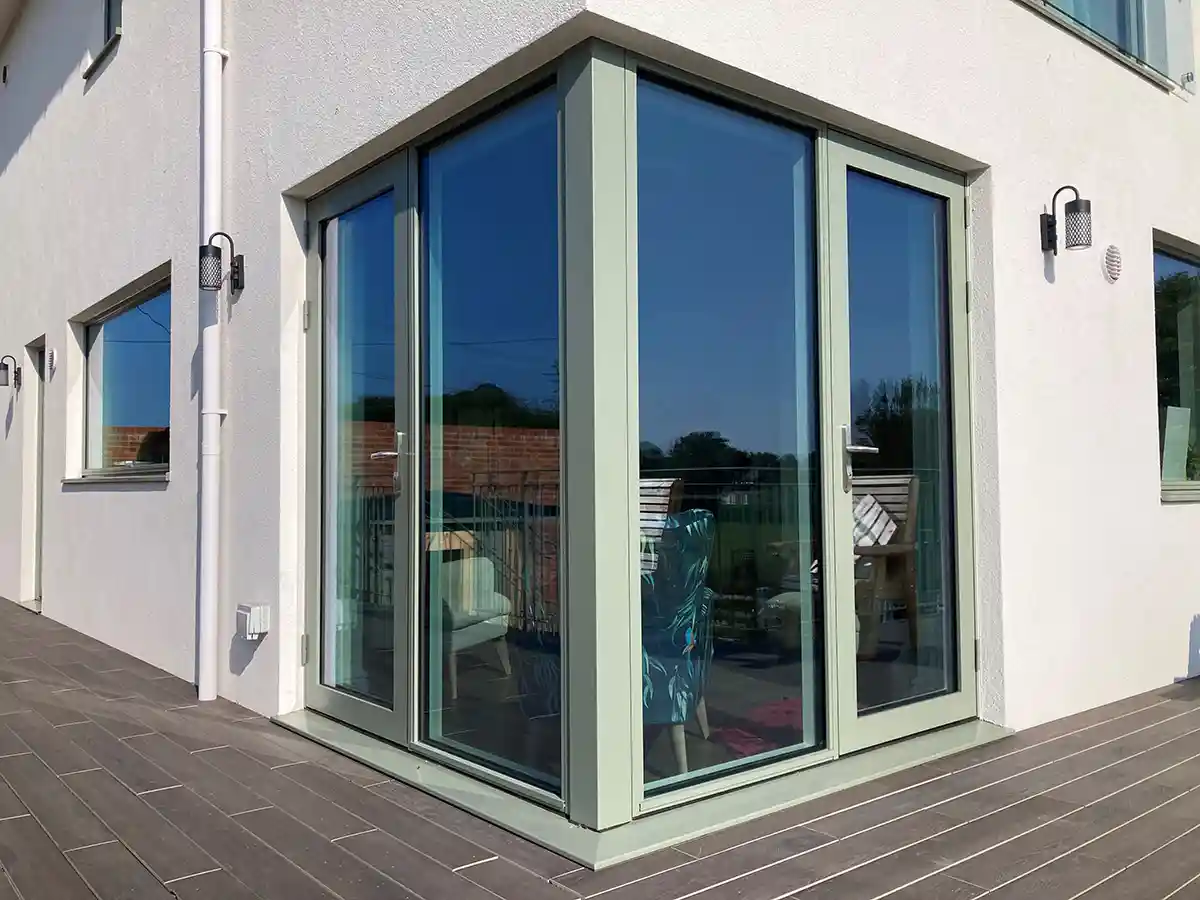The Window Specification
Can you talk us through the specific window styles and configurations you chose for your home?
We selected several different window and door styles and configurations to balance the look we wanted with energy efficiency considerations and, of course, the budget. On the (contemporary) rear façade, to get the most out of our surroundings, we used:
Sliding Doors : At just over 3m wide, the
S315A sliding doors in our communal family space offer clear views across the rear of our property.
Corner Window : A structurally open corner with a fixed glass unit creates a seamless visual connection to the outdoors. We opted for the
S307A profile door and sidelights over the bifold doors we had originally planned for two reasons:
- Cost-effectiveness - triple-glazed French doors were cheaper even when compared to double-glazed bifold alternatives.
- Weather-tightness concerns on the exposed facade, with less risk of air leakage compared to bifold doors with multiple moving parts.
French doors : We chose the
S309A glazed door combined with a Juliet balcony on the third floor of the house. These offer floor-to-ceiling light and open up the master bedroom to the countryside views.

Indoor-outdoor flow: a structurally open corner with Norrsken French doors and sidelights brings the feel of the outdoors into the family's living area.
In the rest of the house we chose
outward opening windows, as well as glazed, stable (partially glazed) and
panel entrance doors. Fixed (non-opening) windows dominate the design for several reasons:
- Aesthetics: Fixed units offer a sleeker, more minimal look with less bulky frames compared to opening windows. We chose the P31T in a fixed profile for our curved window on the front façade to fit the traditional feel we were going for, and the P31A (an alu-clad model of the same window profile).
- Energy Efficiency: With fewer seals and potential air leakage areas, fixed windows minimize air leakage for superior thermal performance.
- Cost-Effectiveness: These units are generally 30-45% cheaper than opening versions and kept the overall window budget under control.
- Ventilation: With an MVHR system providing controlled ventilation, a high number of opening windows was deemed unnecessary.
Energy Efficiency vs Style
How did you balance your desired aesthetics with the need for energy efficiency when making your choices?
It’s important to emphasise to people considering their own self-build project that, if you are clever with the design, you don’t need to bust your budget. We balanced the cost of MHVR with windows, using more fixed windows to lower the cost and still get both the look and performance that we wanted.
From a design perspective, we found Passive House too restrictive – for example, it limited the amount of glazing on the south façade, and meant incorporating shading into every south-facing window. Using the PHPP and having a designer all added to the cost. So that was a compromise we made, both for design and, in part, for cost reasons.
I was generally aware of wanting to be energy-efficient – I made lots of trips to the NSBRC – but I didn’t want to pursue energy efficiency ‘for its own sake’, as it were. Things had to make financial sense, too. For example, we have three-phase electricity and solar. Our solar panels are in-roof, sitting flush with the roof and replacing some of the tiles. This makes both financial and energy-saving sense: the upfront cost of the solar was worth it because we both saved money on the roof tiles we’d have had instead, and we generate more than enough solar electricity to cover our needs in this four bedroom house.